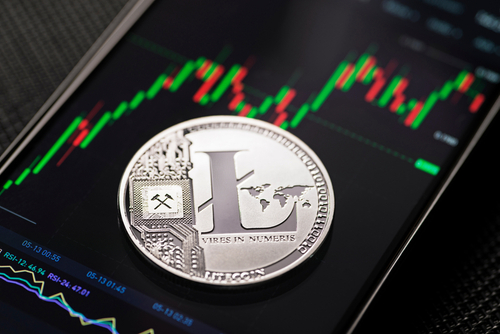Whether Bitcoin halvings are priced in has become a fervent topic of debate in the crypto community. Ahead of the upcoming fourth halving of Bitcoin’s young life, slated for April 2024, we look at the performance of Litecoin through past halvings.
The second halving in 2015 saw strong price performance for Litecoin, while the third halving in 2019 saw falling prices, before the trend reversed after COVID struck in 2020. It is too soon to draw conclusions regarding the fourth halving, which occurred just over a week ago on August 5th.
Let us now look at Bitcoin’s price action while marking the halving events. Typically, we have seen outsized volatility in the months leading up to a halving, before strong outperformance on the other side. The outperformance has also grown smaller with each halving, perhaps unsurprising given the market cap has grown so much in the four years between each event.
So, why has the effect of halvings on Bitcoin been, at least optically, larger than the same events on Litecoin? The first theory takes us to the heart of the debate on whether halvings are really priced in: while past events have preceded steep inclines for Bitcoin, they have also lined up well with global liquidity cycles.
The below chart from Fidelity shows this well. There is perhaps no greater influence on the valuations of risk assets than central bank balance sheets, and the halvings have lined up incredibly well with the expansion of those same balance sheets.
The next halving could well line up with an expansion in liquidity again. The previous eighteen months have seen one of the fastest rate-hiking cycles in recent history, with the Fed funds rate now above 5%. Now, looking at probabilities implied by the futures market, the market is anticipating that the hikes are coming to a close.
Looking further forward towards the time period around the halving (April), futures imply that rate cuts could come into play. Not to mention, when we look at the yield curve, it is currently at the deepest level of inversion since the early 80s.
The macro situation has been changing incessantly, and there is every chance that forecasts around the liquidity cycle could flip, and the halving won’t line up as well as it has done in the past. This is where Litecoin may come in. With its halvings landing at different dates to Bitcoin in the past, yet not boosting prices as much as the orange coin has seen, perhaps it is just a timing thing, whether macro-related or other?
Ultimately, the sample size is small. Bitcoin has only experienced three halvings, and one could even argue that it was only the recent event in 2020 that occurred while the asset was trading with sufficient liquidity. Revisiting Litecoin’s price performance around the time of Bitcoin halving will be interesting, as by then it will have had around eight months post-halving and may present a more relevant reference point.

